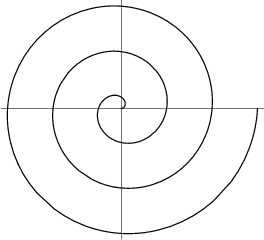What is the Spiral Model?
The Spiral Model
The Spiral Model is a Software Development Life Cycle model. A Software Development Life Cycle is a sequence of processes and practices that, when followed, eventually produce software.
The spiral model has a number of phases – each phase can be divided into four quadrants. A graphical representation of this is shown above, where each loop of the spiral represents one phase.
Processes
The phases in the spiral model work much like the Iterative Model. In the first phase, the complete software is built and in the subsequent phases, changes and improvements are made. Each phase is divided into the following processes:
- The Objectives Identification stage involves the identification of the objectives of the phase. All potential solutions are also determined during this stage.
- The Risk Management stage involves the evaluation of all potential solutions to find the best solution. The risks associated with this solution are then identified and resolved.
- In the Development stage, the actual programming and development of the software is done. Thorough testing is done to ensure quality.
- Finally, there’s Review and Planning, which evaluates the current version of the software by the client and the subsequent planning for the next phase.
Advantages
- The spiral model is ideal for use in large-scale projects.
- Risk Management in every phase reduces risk and makes projects scalable.
- The iterative approach allows for flexibility in requirements and allows the customer to evaluate the product at every phase.
Disadvantages
- The high cost to the spiral model makes it unsuitable for small projects.
- The spiral model is much more complex than other Development Life Cycles.
- The number of iterations is variable; hence, time estimation is difficult to do.
Free Resources
Copyright ©2025 Educative, Inc. All rights reserved
TRENDING TOPICS
